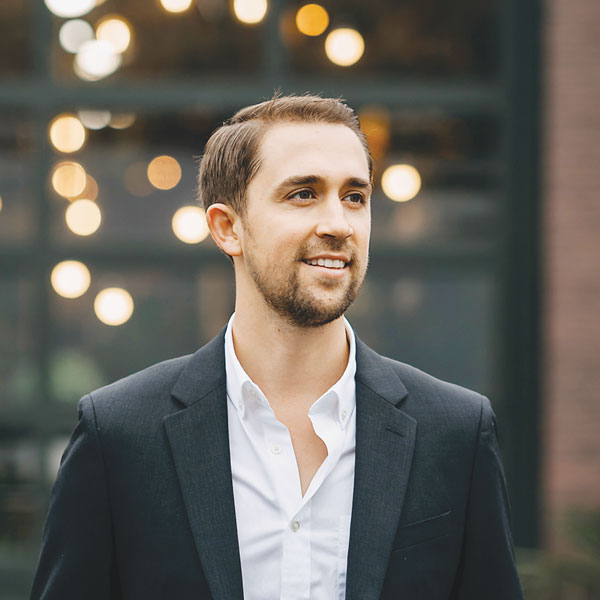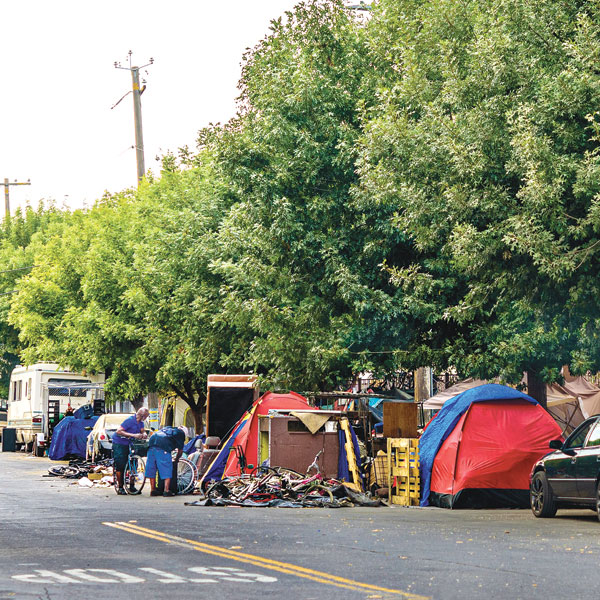The homeless crisis has defied all solutions advanced by local and state politicians. In Sacramento, strategies to end the crisis have only made the problem worse, with increased numbers of people living on our streets.
The challenges are complex and seemingly endless. Homeless people struggle with alcohol and drug addiction. Many suffer from mental illness and physical health issues. Some engage in criminal behavior. Few are prepared for employment opportunities.

For years, Inside Sacramento has covered the homeless crisis from multiple perspectives. One influential example of our work appeared in May 2019, when I wrote a column titled, “Is Sacramento Dying?” The piece was based on a documentary film about homelessness in Seattle. It is the most-accessed article on our website to date. Thousands read and shared it.
Christopher Rufo is a documentary filmmaker and researcher. He released a compelling video in December titled, “Homeless in America.” The video helps explain the crisis from the ground level—what drives and perpetuates the problem, and why nothing seems to help.
Rufo grew up in Arden Park. He graduated from Rio Americano High School and Georgetown University. He lives in Seattle with his wife and two young sons.
“Homelessness has devastated West Coast cities. Here’s what drives the problem—and what can be done to solve it,” Rufo says as he describes his documentary. “This film was based on a paper originally published by The Heritage Foundation and summarizes three years of my research on homelessness.”
Rufo explains cities such as Sacramento, Los Angeles, San Francisco, Portland and Seattle have spent billions of dollars on homelessness in the past decade, only to see street populations explode. The number of homeless people has increased 15 percent in Los Angeles, 24 percent in San Francisco and 25 percent in Seattle.
“Local leaders have the primary responsibility for homelessness policy,” he says. “Those in cities who have failed to solve the problem have failed because they have failed to understand the problem—with perilous consequences not only for average citizens, but also for the homeless themselves, who have been left in the streets where they suffer from addiction, mental illness and threats of violence and in many cases pass away.”
Rufo’s greatest contribution may be his new way of approaching the crisis. He calls it “a human problem, not a housing problem.”
“While it is tempting to think of homelessness in terms of housing—it is embedded in the very term ‘homeless’—this conceptualization obscures important dynamics. For most of the homeless, lack of housing is the result of a series of misfortunes, including job loss, domestic violence, family crisis and health emergencies,” he says.

“Furthermore, despite the political rhetoric that attempts to avoid it, two of the primary drivers of homelessness are drug addiction and mental illness. According to the latest data, approximately three-quarters of the unsheltered homeless—people living in cars, tents and on the streets—suffer from serious mental illness and drug addiction. Ultimately, as we have known since the 1990s, when street homelessness first became prevalent in major cities, homelessness is the result of the loss of human relationships, including those with family and community.”
In the film, Rufo examines the policy known as Housing First. The definition has evolved, but today it refers to providing permanent housing to homeless people with no requirements for sobriety or participation in mental health or social services.
“This model assumes that many, if not most, of the homeless will never be able to overcome their addictions and that programs should therefore focus on harm reduction, which means preventing overdose deaths and managing the most negative aspects of addiction, not promoting drug recovery or abstinence,” Rufo says. “Unfortunately, neither Housing First nor harm reduction has lived up to its promises.
“Housing First programs, which have cost the local, state and federal governments billions of dollars over the past decade, have failed even to keep pace with homelessness. Some projects have cost up to $700,000 for a simple apartment unit. And taxpayers in Los Angeles voted for a $1.2 billion bond that will likely provide fewer than 5,000 Housing First units for a total homeless population of 59,000.”
He cites evidence that indicates Housing First programs don’t reduce substance abuse or mental illness. “Many Housing First programs simply transfer the dysfunction of the street to subsidized apartment complexes,” he says.
“Another policy is needed. The approach of progressive West Coast cities has not succeeded in reducing homelessness. But there are other models in the United States that show the potential for positive results.”
The documentary visits Houston and finds a success story. Democratic Mayor Sylvester Turner believes the city must balance the provision of services with enforcement of the law against street camping.

“This approach has paid dividends,” Rufo reports. “Between 2011 and 2019, the city reduced homelessness by a remarkable 54 percent as it continued to skyrocket in cities like Los Angeles, San Francisco and Seattle. The mayor consistently enforced the law against camping and drug consumption, even fighting and winning a lawsuit against the American Civil Liberties Union, which had attempted to hamstring enforcement efforts.”
Turner embraced an important lesson: City governments cannot and should not tolerate rampant street disorder, which is common in West Coast cities. This only incentivizes more homelessness and disorder, including large numbers of transient homeless who migrate to permissive communities.
To address the challenges associated with homelessness, particularly addiction and mental illness, Rufo believes cities must provide effective services and treatment programs.
“Fortunately, gold standard Treatment First programs have demonstrated robust results,” he says. “The University of Alabama at Birmingham has run a multi-decade study on intensive housing and treatment programs for the homeless that get people off the streets, into recovery, connected with employment and eventually on to independent living. In one of the program’s most successful cohorts, 44 percent of men were stably housed and 53 percent were stably employed after 12 months—an incredible outcome, given the severe social, psychological and medical challenges of this population.”
Rufo concludes that current approaches don’t work. Most Sacramento residents would agree. “Housing First and harm reduction made outsized promises but failed to deliver commensurate results,” he says. “Cities must recognize that a new approach is needed to address the full nature of human challenges facing the homeless.”
His solution has two parts: First, enforce laws against public camping, drug use and property crimes. Second, move from Housing First to Treatment First, which addresses addiction and mental illness and steers clients toward self-sufficiency.
“Compassionate leadership, combined with a proper sense of limits and public order, can make all the difference,” Rufo says.
Cecily Hastings can be reached at publisher@insidepublictions.com. Follow us on Facebook, Twitter and Instagram: @insidesacramento.
















